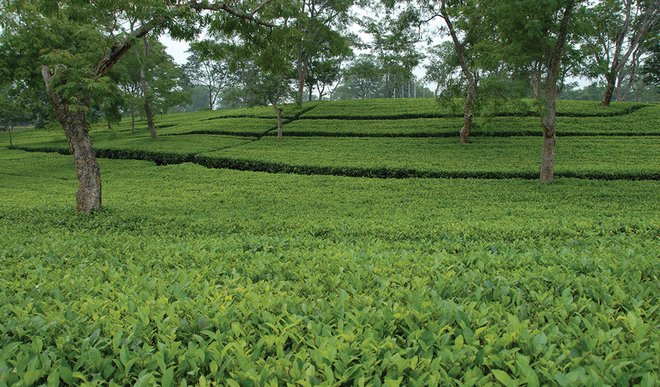Which area of Assam black tea tastes good? Does long-term drinking Assam black tea have side effects?
It is clear that disruptions in rainfall and temperature patterns are affecting the tea industry, and the impact is sure to expand. Drought in Africa has reached crisis proportions. In northern Kenya, more than 1 million people face hunger. In India, heavy rainfall erodes hillsides and damages vegetation. Low-lying areas of Chinese farms are covered with dust, blocking sunlight. Glaciers in the Himalayas, Asia's water tower, have melted twice as fast since 2000 as they did in the previous two decades. These are macro-level "big picture" numbers. Less clear is the local micro perspective. What impact have these changes had on individual farms? Which are immediate and not cumulative? What are the most critical climate variables? What can farmers do instead of policymakers? A useful study published in late 2016 provided answers through detailed tracking of crop yields in Assam, drawing on 10 years of data collection. "Observing the effect of climate on tea production in Assam, India": Journal of Applied Geography). It captures the structural dynamics of climate-yield relationships. Assam remains the largest tea growing region in the world, accounting for one-fifth of global production and half of India's. Tea provides employment for 1.2 million workers. The region faces increasingly difficult times, especially in improving tea quality to compete with its main export rivals China, Kenya and Sri Lanka. Since 2013, input costs have increased 8 percent a year, but prices have only increased 1 percent a year. Clearly, climate change has created many problems for tea growing operations in Assam:800 large plantations and more than 100,000 small farmers, who now produce about half of Assam's output. Tea yield studies are particularly helpful in using data at the business unit level. The data, collected from 82 tea plantations, show monthly yields from 2004 to 2013, as well as daily weather, temperature and precipitation data. Thus, it adds a micro focus to support and extend macro research findings. They tend to address policy issues; yield surveys are more relevant than management surveys. Macroscopic analysis shows consistent long-term regional warming trends and yield decline. Econometric models confirm that seasonal variations in the monsoon are having long-term effects. The Assam study breaks down the data and shows that the main source of yield decline is short-term variations in temperature and precipitation within a single month. On average, the prevailing weather pattern throughout the year is that January is the coldest month, the monsoon comes in June, and June-September is the month with the highest precipitation. The direct impact on yields comes from a month, especially five consecutive days without precipitation.

The management message of the study is that priorities must focus on reducing bush sensitivity to precipitation changes: accelerating the development of drought-resistant varieties; improving irrigation infrastructure (e.g., drip fertilization vs. artificial field spraying); increasing bush protection for shade trees to retain moisture; and improving pruning practices. The study concluded that this combination of good practices provided immediate and adaptive returns.
Important Notice :
前街咖啡 FrontStreet Coffee has moved to new addredd:
FrontStreet Coffee Address: 315,Donghua East Road,GuangZhou
Tel:020 38364473
- Prev

Price list of Kenyan black tea and Sri Lankan black tea in 2021 is Bao Ceylon black tea expensive
In May, tea prices fell from the highs triggered by the outbreak, but still higher than expected, as restaurants and cafes typically consume large amounts of excess tea. Auction prices in India, Sri Lanka and Kenya all rose, with some buyers trading at record prices, violating the rules of supply and demand from the start. Country
- Next

What is the difference between Earl Grey tea and Earl Grey tea?
Earl Grey and Earl Grey are popular bergamot flavored tea blends. The main difference between the two is that Earl Grey tea also contains lemon peel and orange peel. Earl Grey tea has been around for hundreds of years, while Earl Grey tea is a recent invention, made by tea company Twinin
Related
- A complete list of coffee bean names and their meanings! What is Yejia Shefi coffee? Where is Mantelin coffee?
- What grade does Arida Manor Kaduai coffee beans belong to? What treatment is Arida ASD slow anaerobic sun exposure?
- The milk tea cup becomes smaller?! Overlord Tea Girl launches a new "Return to Yunnan" series
- Accused of selling counterfeit and high-priced coffee beans! Well-known boutique coffee brand "Oukelao" bowed and apologized!
- How to make espresso dumplings? Can I eat coffee and glutinous rice balls together?
- Save the unformed and stagnant powder cakes in one second! What is the problem with stagnant water in the powder bowl of the espresso machine?
- What does hand-brewed coffee stop mean? Why is it not recommended to make coffee by hand?
- Is it normal to smell like coffee? Why does coffee smell like alcohol? What's wrong with the strong smell of cold extract ice dripping ice brewed coffee?
- How to solve the problem that hand-brewed coffee extraction takes too long? Why is the water flowing so slowly when making coffee?
- The main points of making Australian white coffee, the proportion details, how does Australian white properly foam and blend the flowers?

